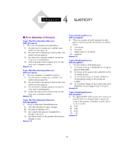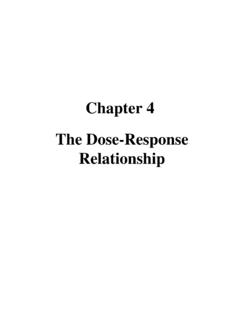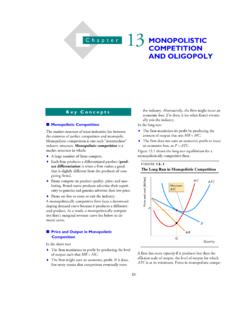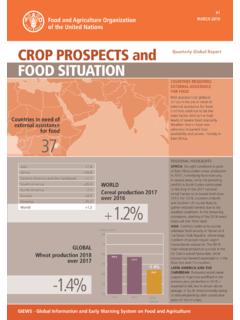Transcription of Chapter 13 EXPENDITURE MULTIPLIERS: THE …
1 385 13 expenditure multipliers : THE keynesian MODEL* * This is Chapter 29 in Economics. Fixed Prices and EXPENDITURE Plans Topic: keynesian Model Skill: Recognition* 1) In the keynesian model of aggregate EXPENDITURE , real GDP is determined by the A) price level. B) level of aggregate demand. C) level of aggregate supply. D) level of taxes. Answer: B Topic: keynesian Model Skill: Recognition* 2) The keynesian model of aggregate EXPENDITURE assumes that A) individual prices are flexible but the price level is fixed. B) both individual prices and the price level are flexible. C) both individual prices and the price level are fixed.
2 D) individual prices are fixed but the price level is flexible. Answer: C Topic: aggregate Implications of Fixed Prices Skill: Recognition 3) The typical firm A) changes its prices frequently in response to fluc-tuations in aggregate demand. B) lowers its prices when inventories are decreasing. C) does not change its prices immediately when ag-gregate demand fluctuates. D) lowers its prices if sales exceed production. Answer: C Topic: aggregate Implications of Fixed Prices Skill: Conceptual 4) If firms set prices and then keep them fixed for a period of time, their fixed prices imply that A) the aggregate price level is fixed and that aggre-gate demand determines the quantity of goods and services sold.
3 B) prices are set by aggregate demand and supply. C) the aggregate price level adjusts continuously. D) the aggregate price level is fixed and that aggre-gate supply determines the quantity of goods and services sold. Answer: A Topic: EXPENDITURE Plans Skill: Recognition 5) In the very short term, which of the following is fixed and does not change when GDP changes? A) Planned investment B) Planned consumption C) Planned imports D) All of the above answers are correct Answer: A Topic: EXPENDITURE Plans Skill: Recognition 6) In the very short term, planned investment ____ when GDP changes and planned consumption EXPENDITURE ____ when GDP changes.
4 A) changes; changes. B) changes; does not change C) does not change; changes D) does not change; does not change Answer: C Chapter 386 Chapter 13 Topic: Consumption Function Skill: Recognition 7) A consumption function shows a A) negative (inverse) relationship between con-sumption EXPENDITURE and saving. B) positive (direct) relationship between consump-tion EXPENDITURE and price level. C) negative (inverse) relationship between con-sumption EXPENDITURE and disposable income. D) positive (direct) relationship between consump-tion EXPENDITURE and disposable income. Answer: D Topic: Consumption Function Skill: Recognition 8) Disposable income is A) income minus saving.
5 B) income minus net taxes. C) income plus transfer payments minus consump-tion EXPENDITURE . D) total income divided by the price level. Answer: B Topic: Consumption Function Skill: Recognition 9) The consumption function relates consumption EXPENDITURE to A) the interest rate. B) disposable income. C) saving. D) the price level. Answer: B Topic: Consumption Function Skill: Recognition 10) The consumption function relates the consump-tion EXPENDITURE decisions of households to A) the level of disposable income. B) investment decisions of firms. C) saving decisions of households. D) the nominal interest rate. Answer: A Topic: Consumption Function Skill: Recognition 11) The graph of the consumption function has con-sumption EXPENDITURE on the vertical axis and A) the interest rate on the horizontal axis.
6 B) time on the horizontal axis. C) disposable income on the horizontal axis. D) the Consumer Price Index on the horizontal axis. Answer: C Topic: Consumption Function Skill: Recognition 12) The slope of the consumption function is A) less than 1. B) 1. C) greater than 1. D) negative. Answer: A Topic: Consumption Function and the 45-Degree Line Skill: Recognition 13) The slope of the consumption function is A) less than the slope of the 45-degree line but not equal to zero. B) greater than the slope of the 45-degree line. C) equal to the slope of the 45-degree line. D) equal to zero. Answer: A Topic: Consumption Function Skill: Conceptual 14) A movement along the consumption function is the result of changes in A) the real interest rate.
7 B) disposable income. C) expected future income. D) All of the above answers are correct. Answer: B Topic: Consumption Function Skill: Recognition 15) Which of the following variables does NOT have a direct effect of changing consumption expendi-ture? A) disposable income B) wealth C) expected future income D) expected future profits Answer: D EXPENDITURE MULTIPLIERS: THE keynesian MODEL 387 Topic: Consumption Function Skill: Conceptual 16) Which of the following will NOT shift the con-sumption function upward? A) an increase in disposable income. B) a fall in the real interest rate. C) an increase in wealth. D) none of the above shift the consumption func-tion upward.
8 Answer: A Topic: Autonomous Consumption Skill: Recognition 17) Autonomous consumption is that portion of con-sumption EXPENDITURE that is not influenced by A) income. B) preferences. C) prices. D) the legal authorities. Answer: A Topic: Autonomous Consumption Skill: Recognition 18) Autonomous consumption A) increases with income. B) is independent of income. C) is independent of income and must be equal to zero. D) decreases with income. Answer: B Topic: Consumption Function Skill: Analytical 19) In the above figure, consumption and disposable income are equal at A) any point along the consumption function. B) a saving level of $100 billion and disposable in-come level of $400 billion.
9 C) a disposable income level of $0. D) a disposable income level of $200 billion. Answer: D Topic: Saving Function Skill: Analytical 20) In the above figure, at a disposable income level of $200 billion, saving equals A) disposable income. B) zero. C) $40 billion. D) consumption expenditures. Answer: B Topic: Consumption Function and the 45-Degree Line Skill: Analytical 21) In the above figure, the line AB is called A) the saving function. B) the consumption function. C) the 45-degree line. D) the EXPENDITURE function. Answer: C 388 Chapter 13 Topic: Consumption and Saving Skill: Analytical 22) When disposable income equals $800 billion, planned consumption EXPENDITURE equals $600 billion, and when disposable income equals $1,000 billion, planned consumption EXPENDITURE equals $640 billion.
10 What is planned saving when disposable income is $800 billion? A) $200 billion B) $360 billion C) $560 billion D) $1,400 billion Answer: A Topic: Saving Function Skill: Recognition 23) Dissaving occurs when a household A) spends less than it receives in disposable income. B) spends more than it saves. C) saves more than it spends. D) consumes more than it receives in disposable in-come. Answer: D Topic: Saving Function Skill: Conceptual 24) When the consumption function lies above the 45-degree line, households A) spend on consumption an increasing percentage of any increase in income. B) spend on consumption a decreasing percentage of any increase in income.












